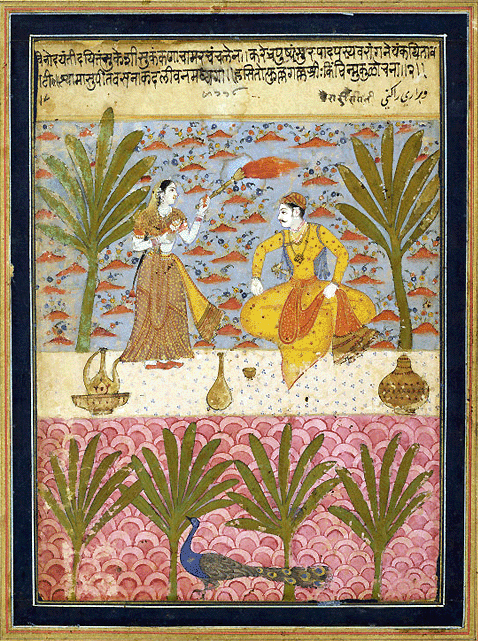
|
|
|
|
BY: SUN STAFF

Vasanta Raga Dec 26, 2011 — CANADA (SUN) — A serial presentation of India's artistic legacy in paintings, sculpture and temple architecture. THE DECCANI SCHOOLS Like the group of Bikaner paintings featured in yesterday's segment, of Govinda fluting with His cows, there are many beautiful Vaisnava themes to be found among the Deccan Miniatures. Today we take a brief look at paintings from the Ahmednagar School, a sub-category of the Deccan School. In the Ahmednagar Miniatures, Vaisnava themes are overshadowed by the Persian influence, no doubt because the earliest examples of this school are no longer in existence. Ahmednagar, Maharashtra, situated about 250 km. due east of Mumbai, was an Islamic kingdom during the Sixteenth Century. During the late Iron Age it was part of the territory of the Sattavahanas and during the 1st Millennium A.D. it was ruled by the Yadavas, until it fell to the Muslim intruders.

Varari Ragini Nearly all the early examples of Ahmednagar painting are in the Persian style, an influence seen not only in themes, but also in the richly brilliant colors, high horizons, golden skies and landscapes, and gilt scripts framing the wide borders of manuscript illustrations. This style is equally evident in Ahmednagar School Ragamala illustrations of the period. In the Ragamala illustration of Vasanta Raga above, the painting is bordered along with top with the Raga verse in Devanagari script vas (anta). Not shown is an additional caption above that, in Arabic characters, which mislabels the painting as Hindola Raga and Vasant Ragini. The raga depicted is actually the Vasanta, and it was no doubt the introduction of the swing (hindola) that led to the confusion of titles. The Sanskrit verses for this Raga describe how Vasanta (the male personification of Spring, or Kamadeva) is sprayed with holi colors by young maids in a mango grove, on a Kashmiri mountain. Praised by strings of bees, he disports himself on a swing. Like a blue lotus (dark complexioned) and dressed in a tawny garment, he holds in his fingers the shoots of the fresh mango. In the painting, the young male Spring wears a four-pointed coat, a fashionable style worn during the reign of Akbar. This aspect of the figure may have been adopted by the artist from a Malwa influence. The distinctive feature of the women's costumes are the projecting transparent veils, a style also found in the Nimat Namah (cookbook) of Malwa. This may tie it to the Chaurapanchasika Group of Miniatures, perhaps developed in its classical form in Malwa or south Rajasthan during the second half of the 16th Century. This detail of costume does point to the northern Deccan origin of this Vasanta Raga illustration. REFERENCES:
| |